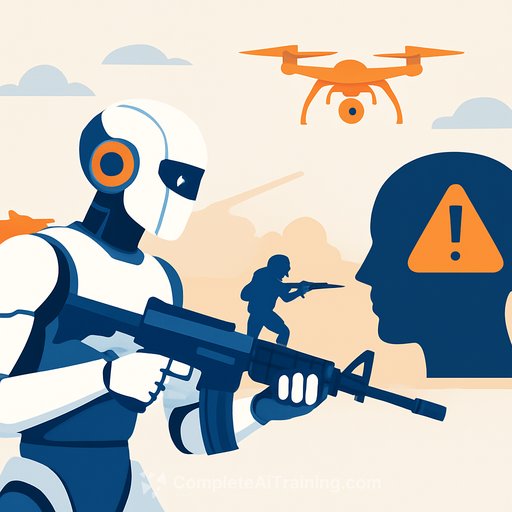AI in Modern Weapons: Why It's Now Relevant and What Risks It Carries
AI is no longer theory on the battlefield. It's parsing sensor feeds in seconds, assisting with drone control, and, in some cases, executing tasks with minimal human input. That speed brings an edge-and a new set of failure modes that engineers must anticipate.
Why this got relevant-fast
First, accessible compute changed the game. What once required rare supercomputers now runs on deployable, affordable hardware, so integration into miltech moved from concept to shipping code.
Second, practical use cases matured. Object recognition, large-scale data triage, language models, and generative tools reached "good enough" for real workloads. Combined with a war that produces more video than humans can review, AI compresses analysis time from hours to minutes.
What AI already does on the battlefield
- Target recognition in video and live streams for faster triage and reporting.
- Autonomous and assisted navigation, including visual map matching when GPS and radio are denied.
- Telemetry analysis to find jamming zones, RF interference, and safer corridors.
- Dynamic re-targeting across platforms when conditions change mid-mission.
- Swarm coordination under development, enabling one operator to manage many drones.
Key risks engineers should plan for
- Faulty model training: Label noise, narrow datasets, or silent data drift drive wrong classifications. Expect mis-ID and blind spots.
- Adversarial deception: Camouflage, decoys, shape changes, and RF deception can steer models off course.
- Automation bias: Teams over-trust systems that "usually work," skipping verification when it matters most.
- Over-dependence: If the model fails without a fallback, mission chains break in unexpected ways.
- Model and data theft: Poorly protected models can be intercepted, cloned, or repurposed.
Practical mitigations for IT and development teams
- Data pipeline discipline: Version data and labels, log provenance, and run continuous drift detection on inputs and outcomes.
- Scenario coverage: Train and test across seasons, weather, sensors, altitudes, distances, and adversarial conditions. Use sim + field data.
- Adversarial testing: Red-team with camouflage, decoys, perturbations, and EW conditions. Track failure modes as first-class bugs.
- Human gating: Keep a clear "human-in/on-the-loop" policy. Gate lethal actions behind human confirmation where required.
- Fallbacks and degrade modes: If GPS/RF fails, switch to visual/IMU dead-reckoning and safe behaviors. Define predictable fail-safe states.
- Telemetry and audit: Record sensor inputs, decisions, confidence levels, and interventions for post-mission review and retraining.
- Robustness techniques: Use ensembling, uncertainty estimation, and rejection options. Prefer "no decision" over confident wrong decisions.
- Secure the stack: Encrypt models at rest and in transit, sign firmware, watermark models, and isolate deployment environments.
- Model lifecycle: Staged rollouts, canaries, and rollback plans. Retrain on fresh field data with strict quality gates.
- EW-awareness: Treat RF conditions as a first-class input. Adapt routing and behavior based on live interference maps.
Autonomy and the human decision point
Autonomous behavior already exists in guidance systems after launch. The live question is where a human sits in the chain between detection and effect. Policies range from "press to launch" to intervention authority when the algorithm drifts.
Ethical and legal guidance is evolving. For additional context, see the ICRC's work on autonomous weapon systems here and the U.S. DoD's principles for Responsible AI here.
Where this is heading
Expect more capable AI agents, better swarm control, and improved autonomy in denied environments. That brings faster loops and fewer exposed personnel, but it also raises the bar for validation, oversight, and accountability.
The rule stands: automate the repeatable, keep humans on the hard calls, and treat model error as inevitable-then design so that the blast radius stays small.
Level up your AI skills
If you're building or validating ML systems and want structured, practical training, explore curated programs by job role here.
Expert perspective referenced
Insights in this article reference statements by Ruslan Prylypko, head of the C2IS department at Aerorozvidka, on the current military use of AI, its benefits, and its risks.
Your membership also unlocks:






